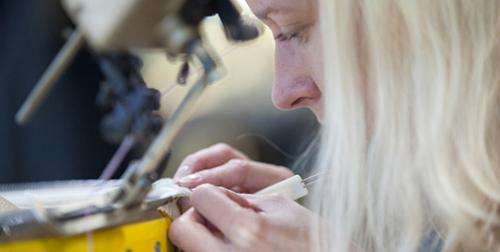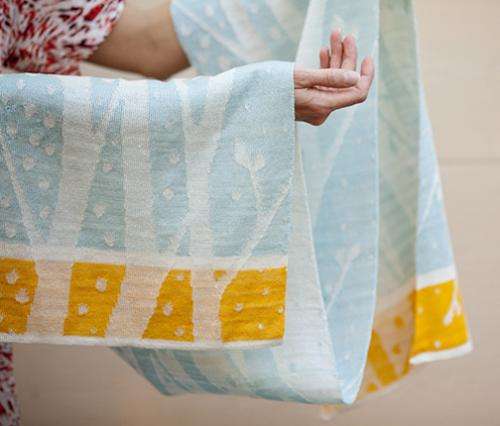Aalto University has developed a new process with global significance for working cellulose into a textile fiber.
The world's first textile product made from Ioncell cellulose fiber as well as other results yielded by research programs will be introduced at a seminar to be held by the Finnish Bioeconomy Cluster FIBIC Oy on November 20, 2013.
New solutions for utilising fiber-based material in the textile process attract global interest. "The production volumes of cotton cannot keep growing due to the volumes of water and cultivation area it demands. On the other hand, viscose is problematic because of the highly toxic chemicals used in its production," says researcher Michael Hummel at Aalto University.
Answers to market needs
The process and textile fiber created in the research program open up new kinds of markets for the Finnish forest and garment industries. Finnish cellulose mills provide the new Ioncell fiber with high-quality raw material. "We are still studying the properties of cellulose with the aim of initiating pilot projects that exploit the new process, in cooperation with business enterprises. There's a growing market for an environmentally friendly textile fiber out there," says Hummel.
The new manufacturing process for turning cellulose into quality textile fibers is more ecological than the process employed in traditional viscose production. In addition, the textile fiber produced with the new processing method based on ionic solvents, developed at the University of Helsinki, is clearly stronger than viscose.
"The research has improved the production process and allowed us to create an environmentally friendly product with first-class properties. The Ioncell fiber is ecological and an excellent alternative to cotton and viscose," says Hummel. The research was conducted as part of FIBIC's FuBio Cellulose research program.
Cooperation across industry borders
The new textile fiber developed by Aalto University can be refined into a high-quality end product. In cooperation with the University's Department of Design, the cellulose fiber was worked into a textile sample.
"I designed and produced a piece of clothing which showcases the material. The new material has an excellent capacity for reproducing shades and it's surprisingly easy to work with," says Marjaana Tanttu, who is studying for her Master's degree in Textile Art and Design.
Aalto University is a diverse community of arts and sciences, bringing together the disciplines of technical science, economics, and industrial arts. The collaboration in the FuBio Cellulose program provides a good example of the university's diverse activities.
"New opportunities and products call for open collaboration that goes beyond organizational and country borders," says Professor Herbert Sixta of Aalto University.
Provided by Aalto University
























